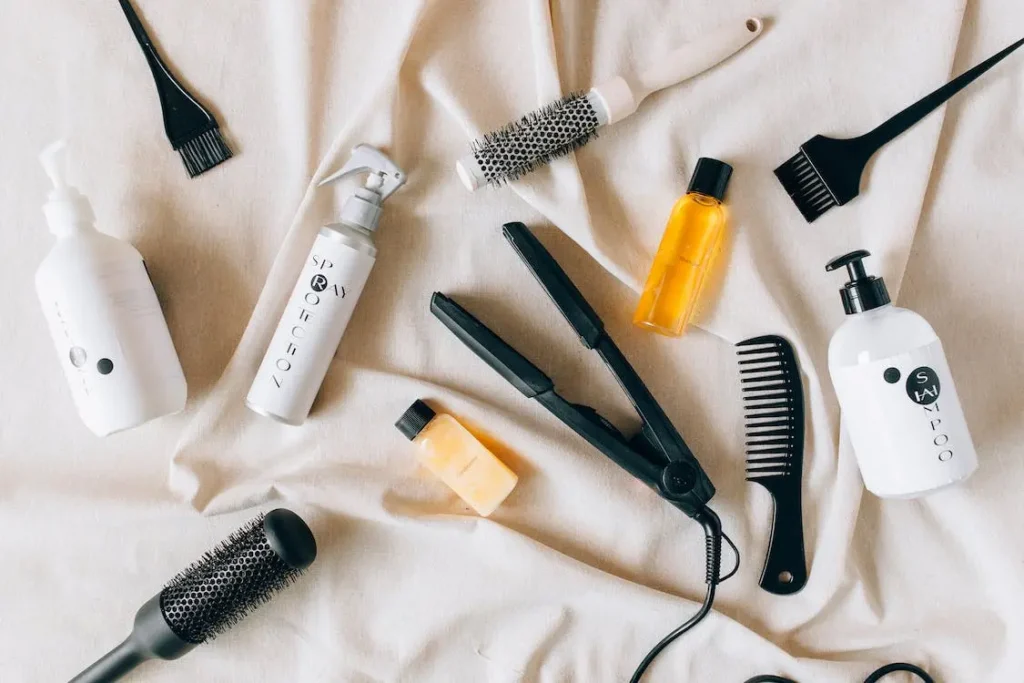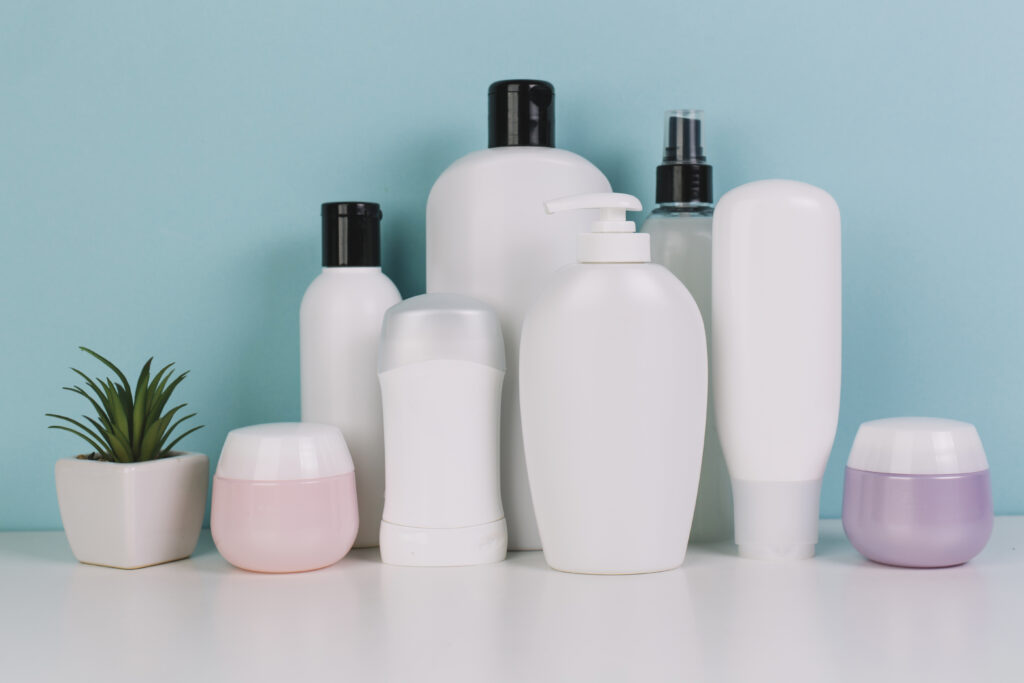Hair care is more than just shampooing and conditioning. It’s about understanding your hair, its needs, and how to nurture it to its full potential. It’s about expressing yourself through your locks and feeling confident in your own skin.
1. What is hair care?
Hair care is the practice of maintaining the health and appearance of your hair. It encompasses everything from choosing the right products to styling techniques to protecting your hair from damage. Healthy hair is not just about aesthetics; it can also boost your confidence and self-esteem.
2. How hair care contributes to lifestyle?
Taking care of your hair can have a positive impact on your overall lifestyle in several ways:
Increased confidence: When your hair looks and feels its best, you’re more likely to feel confident and put-together. This can translate into success in your personal and professional life.
Improved health: Healthy hair is less prone to breakage, split ends, and other damage. This can save you time and money in the long run, as you won’t need to spend as much on haircuts and hair products.
Stress relief: Taking the time to care for your hair can be a relaxing and therapeutic experience. It can be a way to de-stress and unwind after a long day.
Self-expression: Your hair is a powerful tool for self-expression. By experimenting with different styles and colors, you can show off your personality and creativity.
3. Hair care best practices for men
Men’s hair care needs are often different from women’s. Here are some best practices for men:
Use a gentle shampoo: Men’s hair tends to be oilier than women’s, so you’ll want to use a shampoo that is formulated for oily hair. Look for a shampoo that is sulfate-free, as sulfates can be harsh on the scalp.
Condition regularly: Even if your hair is oily, it’s still important to condition it regularly. This will help to keep your hair hydrated and prevent breakage.
Avoid heat styling: Heat styling can damage your hair, so try to avoid it as much as possible. If you must use heat styling tools, use a heat protectant spray first.
Get regular trims: Regular trims are essential for keeping your hair healthy and looking its best. Aim to get a trim every 6-8 weeks.
4. Hair care best practices for women
Women’s hair care needs can vary depending on hair type, length, and color. However, here are some general best practices:
Choose the right shampoo and conditioner for your hair type: If you have dry hair, you’ll need a moisturizing shampoo and conditioner. If you have oily hair, you’ll need a clarifying shampoo and a lightweight conditioner.
Deep condition regularly: Deep conditioning is a great way to give your hair extra moisture and nourishment. Aim to deep condition your hair once a week or once every two weeks.
Protect your hair from the sun: The sun can damage your hair, so be sure to wear a hat or use a hair product with SPF when you’re outdoors.
Avoid tight hairstyles: Tight hairstyles can put stress on your hair and lead to breakage. Opt for looser styles whenever possible.
5. Tips for DIY hair care
1. Moisturizing Mask with Coconut Oil
Coconut oil is a powerhouse for hair care. Warm up some coconut oil and apply it to your hair, focusing on the ends. Leave it on for at least 30 minutes before washing it out with a mild shampoo. This DIY treatment helps nourish and moisturize dry or damaged hair.
2. Honey and Yogurt Hydration
Mix a tablespoon of honey with plain yogurt to create a hydrating hair mask. Apply the mixture to damp hair and let it sit for 20-30 minutes before rinsing. The honey helps lock in moisture, while yogurt provides protein for stronger, healthier hair.
3. Aloe Vera Scalp Treatment
Aloe vera is known for its soothing properties. Extract fresh aloe vera gel and massage it into your scalp. Leave it on for 30 minutes before rinsing. This DIY tip helps with dandruff, soothes an irritated scalp, and promotes hair growth.
4. Apple Cider Vinegar Rinse
Create a hair rinse by diluting apple cider vinegar with water (1:2 ratio). After shampooing, pour the mixture over your hair and let it sit for a few minutes before rinsing. This helps remove product buildup, adds shine, and balances the pH of your scalp.
5. Egg Protein Treatment
Whisk an egg and apply it to damp hair. Leave it on for 20 minutes before washing it out with cool water. Eggs are rich in protein, which helps strengthen hair and prevent breakage.
6. Avocado Deep Conditioning
Mash a ripe avocado and mix it with a tablespoon of olive oil. Apply this mixture to your hair, focusing on the lengths and ends. After 30 minutes, rinse thoroughly. Avocado provides deep conditioning, leaving your hair soft and nourished.
7. Green Tea Hair Rinse
Brew green tea and let it cool. After shampooing, use the green tea as a final hair rinse. It can stimulate hair growth, soothe the scalp, and add a natural shine to your locks.
Remember to patch test these DIY treatments before applying them fully to ensure you don’t have any adverse reactions. Additionally, consistency is key; incorporate these treatments into your routine for healthier, more vibrant hair.
6. When to see professional advice for hair care
Seeking professional advice for hair care is essential in various situations. Here are some instances when consulting a professional hairstylist or trichologist is recommended:
1. Persistent Hair Issues
If you’re experiencing persistent problems like excessive hair loss, dry scalp, or unexplained changes in hair texture, it’s time to consult a professional. These issues could be signs of underlying problems that require expert assessment.
2. Major Changes in Hair Growth
Significant changes in hair growth patterns, such as sudden hair thinning, bald patches, or a noticeable decrease in hair density, warrant professional attention. These changes might indicate underlying health issues that need to be addressed promptly.
3. Scalp Conditions
Scalp conditions like dandruff, itching, or redness that don’t improve with over-the-counter products may require professional evaluation. A dermatologist or trichologist can diagnose the specific scalp issue and recommend appropriate treatments.
4. Chemical Damage
If you’ve undergone chemical treatments like bleaching, coloring, or perming and notice severe damage, breakage, or excessive dryness, it’s advisable to consult a professional. They can provide solutions to repair and restore your hair’s health.
5. Before Major Hairstyle Changes
Before making significant changes to your hairstyle, such as getting a perm, straightening treatment, or drastic cut, consulting with a professional stylist is crucial. They can assess your hair’s current condition and advise on the best approach to achieve your desired look without causing unnecessary damage.
6. Hair Loss Concerns
If you’re experiencing significant hair loss, consulting a healthcare professional or a trichologist is important. They can help identify the root cause of the hair loss, whether it’s related to genetics, hormonal changes, nutritional deficiencies, or an underlying health condition.
7. Product Allergies or Reactions
If you have experienced adverse reactions or allergies to hair care products, seek professional advice. A hairstylist can recommend hypoallergenic products or alternatives that are suitable for your specific needs.
8. Pre-existing Health Conditions
Individuals with pre-existing health conditions such as thyroid disorders, autoimmune diseases, or hormonal imbalances should consult healthcare professionals about their hair care. These conditions can impact hair health, and managing them effectively may involve specialized advice.
In all these situations, seeking professional advice ensures that you receive personalized guidance tailored to your unique hair care needs. Professionals can provide accurate diagnoses and recommend effective treatments to maintain or restore the health of your hair.
7. Your haircut matters in hair care
The haircut you choose plays a significant role in overall hair care. Here’s how your haircut matters:
1. Prevention of Split Ends
Regular haircuts are crucial for preventing split ends. When hair strands split, the damage can travel up the shaft, leading to further breakage. Trimming the ends regularly ensures that split ends are kept at bay, promoting healthier and stronger hair.
2. Improved Manageability
The right haircut can enhance the manageability of your hair. Layers, for example, can add texture and reduce bulk, making styling easier. A well-structured haircut can also complement your natural hair texture, reducing the need for excessive styling and heat tools.
3. Maintenance of Style and Shape
Certain hairstyles require specific cuts to maintain their shape and style. Whether you have a short pixie cut, long layers, or a bob, regular trims help preserve the intended style and prevent it from looking unkempt or losing its form.
4. Volume and Thickness
A well-executed haircut can create the illusion of volume and thickness. Layers, for instance, can add movement and volume, while strategic thinning can reduce excess bulk in thick hair. Your hairstylist can tailor the cut to enhance the natural characteristics of your hair.
5. Healthier Hair Growth
Regular haircuts contribute to overall hair health by removing damaged and weakened ends. This, in turn, encourages healthier hair growth. When your hair is free from split ends and damage, it has a better chance to grow stronger and longer.
6. Adaptation to Lifestyle
Your haircut should complement your lifestyle. A low-maintenance cut may be more suitable for those with a busy schedule, while someone who enjoys styling may opt for a more intricate style. Aligning your haircut with your lifestyle ensures that your hair care routine is realistic and sustainable.
7. Reduction of Tension and Stress
Certain hairstyles, especially those that involve tight braids or ponytails, can exert tension on the hair follicles and scalp. This tension can lead to hair breakage and even contribute to conditions like traction alopecia. Choosing a haircut that minimizes tension is crucial for maintaining healthy hair.In conclusion, your haircut is an integral part of your hair care routine. Regular trims not only keep your hair looking fresh and stylish but also contribute to its overall health, preventing damage and promoting optimal growth. Consult with a professional hairstylist to find a cut that suits your preferences, lifestyle, and enhances the health of your hair.



